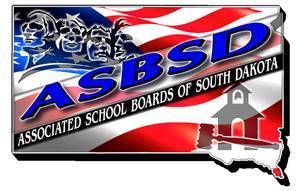One thing was clear following the latest of the Legislative Planning Committee: those in the education field know there’s a crisis in the classroom.
A procession of superintendents testified before the committee – charged with completing a long-term study of K-12 education and its funding components – on the teacher shortage during the July committee meeting.
School Administrators of South Dakota Executive Director Rob Monson told committee members in attendance that school districts were “finding it extremely difficult to recruit and retain” teachers.
The presentation comes on the heels of a survey released last month by SASD stressing the lack of teachers in the teacher pool.
Based on responses from 80 percent of the public school districts in South Dakota, the SASD survey found that 258 teaching positions (over 30 percent) remained open as of May 28 from the more than 800 teaching positions that sought applicants this spring.
Traditionally, South Dakota schools have most of their teaching positions filled by the end of May.
“We are at a crisis stage,” Baltic Superintendent Bob Sittig told the committee.
Low salaries for teachers were one of the main issues cited for the shrinking teacher pool. Monson noted since the 1999-2000 school year Wyoming raised teacher pay by 24 percent, North Dakota 15 percent and Nebraska seven percent.
During that same time period South Dakota decreased salaries by 0.6 percent. South Dakota also ranks last in the nation in average teacher pay.
“Without a major effort we’ll never get caught up,” Monson said, adding that a study released this spring by the S.D. Budget and Policy Project showed that a South Dakota teacher’s salary has the same buying power as it did in 1969.
“We’ve never had to work so hard to recruit people,” Brookings Superintendent Roger DeGroot said.
The teacher shortage isn’t partial to one enrollment category or geographic area in the state.
DeGroot said he used to think teacher shortages were geographical, but stated “that’s not the case anymore.”
Rapid City Superintendent Tim Mitchell said one elementary in his district has had five offers declined by applicants, Hamlin Superintendent Joel Jorgensen said his district received one application for Spanish teaching position, which had been advertised for three months, and Alcester-Hudson Superintendent Tim Rhead testified that 12 of his district’s 28 teaching positions were open for next fall.
“We’re not enticing our best and brightest,” Deuel Superintendent Dean Christensen said.
Every education discipline is seeing a drop in applicants.
The SASD survey released in June revealed of the 62 Math positions open this spring 29 still needed to be filled; of the 64 English positions, 21 were not staffed and of the 43 Special Education positions, 14 remained open. Even elementary teaching positions, which tend to receive more applicants, had 31 positions unfilled from the 279 that initially were open.
“Ever position is hard to fill,” Timber Lake Superintendent Jarod Larson said.
Monson said a review of the state’s retire-rehire program or a tax dedicated to education – similar to the one proposed by Initiated Measure 15, which was defeated during the 2012 election – were potential solutions to solve the crisis.
Sen. Bruce Rampelberg said he didn’t believe a tax could be passed through legislature. Sen. Mike Vehle asked if pieces of the controversial House Bill 1234, which focused on merit pay for teachers and was repealed by voters in 2012, could be used to improve teacher pay.
“If you’re going to dramatically change the way we pay teachers, teachers have to be at the table from day one,” Mitchell said.
Rhead added that it would take more than just money to fix the problem, but time as well because there was a no quick fix.
Sen. Billie Sutton echoed Rhead’s sentiment that the legislature had “run out of band aids” to fix education.
The planning committee is scheduled to reconvene in Pierre on Monday, Aug. 25 with a possible presentation from ASBSD Executive Director Wade Pogany and discussion on the teacher pay policies of neighboring states, critical needs scholarships for teaching positions and school district reserves.
For updates on the study, check the ASBSD Blog and follow ASBSD on Twitter @asbsd_org.
